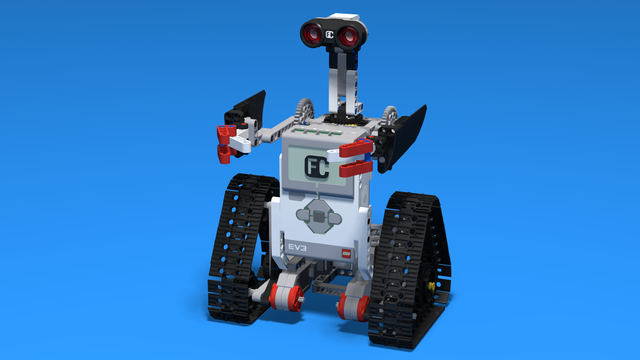The robots that resemble humans are called humanoids. In order to create such robot we have to think about how we understand that we're people. We don't make a lot humanoids because of three major problems.

To access the full video please subscribe to FLLCasts.com
- #1404
- 16 Jul 2019
The first is artificial intelligence (AI). Our brains work in a really complex way, which we don't fully understand. Scientists are making progress in creating artificial intelligence that can learn like us and possibly make the right decisions in any situation. Unfortunately, we do not yet fully understand human feelings and therefore we can not recreate human brain.
The second problem is the way people move and how difficult it is to make a robot moves the same way. To walk, we use hundreds of muscles and complex "programs" that tell us when to use which muscle. This is something that we have been learning since we were born and this is why it is extremely difficult to figure out how to program a robot with our years of experience. The other part of this problem is the external one: as long as we're using hundreds of muscles to move, we will need hundreds of motors and pistons to recreate them in a robot.
The third problem is rather thematic and it is the question "Why? We evolved as a species, because our body is designed to be capable of doing lots of things very well. Most of the robots we create have a particular purpose. For example, if we want a robot that puts stamps on sheets, we'll just put a stamp on a motor and we'll be ready. We don't need this robot to be able to jump or to have a whole human hand with hundreds of muscles. We need only one - the one that is capable of making the movement in the way we need. Therefore, for most of the tasks we can create something more simple than humanoid and it will do the work.
Despite these huge problems, scientists around the world are looking for ways to create the perfect humanoid robot!
Courses and lessons with this Tutorial
This Tutorial is used in the following courses and lessons

Robotics with LEGO - Level 1.5 - Spy games
The second level of the Robotics with LEGO curriculum for students from fifth to twelfth grades.
Students build multiple robots with thread chains and become familiar with the physical concepts of momentum and center of gravity. The concept of gears, their use and basic constructions involving gears are studied.
The new concept of "condition" is introduced in programming. Robots are becoming smarter as they can make complex decisions on their own. "Spy robots" follow their targets and avoid being noticed. This level introduces the light sensor which the robots use to recognize the colors of the objects they are looking for. Robots can stop on a black line and follow a route marked with a colored line on the floor.
The spy's most complex mission in the end of the level is to turn into a sumo wrestler and defeat any other robot in the ring.
- 56
- 12:47
- 136

Lesson 6 - Humanoid robot
In the next lesson we usually do a graduation. Write down your impressions about the students and the reasons why they have the grades you gave them.
- 5
- 5
- 10
- 3d_rotation 1

Level B1. "Spy gadgets". Robotics with LEGO
The third level of the Robotics with LEGO curriculum for students in second, third or fourth grades.
In these lessons, we stress on more complex and challenging robots. The concept of Condition is introduced. Students learn about physics concepts of inertia and center of mass. Robots with two sensors are built and students program both of them. Programming becomes more complex as robots now can make complex decisions. "Spy"-robots sneakily follow their targets, trying to be undetected.
- 30
- 7:30
- 108

Lesson 6 - Spy on Threads
In the next lesson we usually do a graduation. Write down your impressions about the students and the reasons why they have the grades you gave them.
- 6
- 3
- 2
- 3d_rotation 1